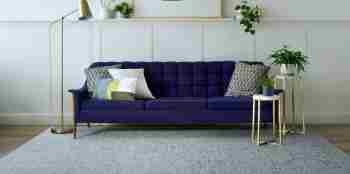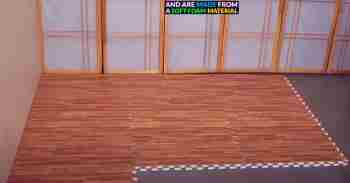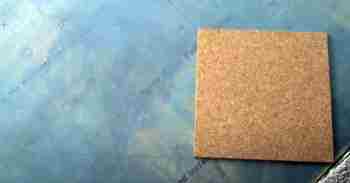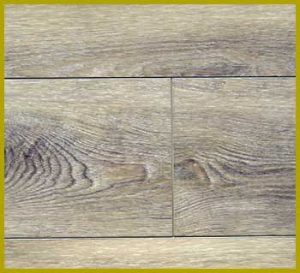If you’ve ever considered changing up the flooring in your home or office, you’ve likely come across Flor Carpet Tiles. But what if you’re looking for something a bit different, or perhaps more affordable?
In this article, we’ll delve into the exciting world of alternatives to Flor Carpet Tiles, including various types of flooring options that can offer you both the style and practicality you need. Let’s start our journey by taking a closer look at some popular alternatives.
Peel-and-Stick Carpet Tiles: The Budget-Friendly Choice

Peel-and-stick carpet tiles are one of the most budget-friendly alternatives to Flor Carpet Tiles. These tiles are easy to install, requiring only a clean surface and a bit of elbow grease.
The adhesive backing makes it simple to position and secure the tiles, while the range of colors and styles available means there’s a design to suit everyone’s taste. Additionally, their DIY nature ensures that you can save on installation costs.
Modular Carpet Tiles: The Eco-Friendly and Creative Alternative
For those who prioritize sustainability and creativity, modular carpet tiles offer an eco-friendly and versatile option. These tiles are designed with a unique interlocking system that allows for endless design possibilities.
Made from recycled materials, modular carpet tiles are an environmentally responsible choice. Plus, their innovative design means that you can mix and match patterns, textures, and colors to create a truly unique floor.
Luxury Vinyl Tiles: The Durable and Stylish Option
Luxury vinyl tiles (LVT) are an increasingly popular alternative to Flor Carpet Tiles. These tiles are known for their durability, water resistance, and ease of maintenance. LVT closely mimics the appearance of natural materials such as stone, wood, or ceramic, making them a stylish choice for any space.
They’re also an excellent option for high-traffic areas, as they can withstand wear and tear better than most other flooring options.
Interlocking Foam Tiles: The Comfortable and Kid-Friendly Choice
If comfort and safety are top priorities, interlocking foam tiles are a fantastic option. These tiles are perfect for playrooms, nurseries, and home gyms, thanks to their cushioned surface that provides added protection against falls and injuries.

They’re also easy to clean and maintain, making them an ideal choice for busy families. Plus, the range of colors and patterns available ensures that you can create a fun and inviting space.
Cork Tiles: The Natural and Noise-Reducing Alternative
Cork tiles are an excellent choice for those looking for a natural, eco-friendly flooring option that can also help reduce noise. Cork is a renewable material, harvested from the bark of cork oak trees without causing harm.
It’s also hypoallergenic, anti-microbial, and provides excellent insulation. The natural resilience of cork means that it’s comfortable underfoot and can help dampen sound, making it a popular choice for open-concept living spaces and multi-story buildings.

Frequently Asked Questions (FAQs)
Flordots are the adhesive connectors used to install Flor Carpet Tiles. If you’re using an alternative to Flor tiles, you may not need Flordots at all. Peel-and-stick carpet tiles, for example, come with adhesive backing, while modular carpet tiles have an interlocking system that doesn’t require adhesives. If you’re using a flooring option that requires adhesion, consult the manufacturer’s recommendations for suitable adhesive products.
In general, carpet tiles tend to be more expensive upfront compared to wall-to-wall carpeting. However, carpet tiles offer benefits like easier installation, the ability to replace individual tiles if damaged, and greater design flexibility. These factors may offset the initial cost difference and make carpet tiles a more cost-effective option in the long run, especially in commercial settings or high-traffic areas where wear and tear is more likely.
While it’s possible to install Flor tiles on top of existing low-pile carpet, it’s not generally recommended. The ideal surface for Flor tiles is a hard, smooth, and clean surface like hardwood, laminate, or concrete. Installing Flor tiles over carpet may result in an uneven surface and poor adhesion, potentially causing the tiles to shift or separate.
FLOR rugs are made from a variety of materials, including nylon, polyester, and wool. The specific materials used depend on the style and design of the rug. Many Flor products are made with recycled materials and designed to be environmentally friendly. Some of their offerings also include solution-dyed fibers, which provide excellent colorfastness and stain resistance.
The lifespan of carpet tiles varies depending on the quality of the product, the materials used, and how well they’re maintained. On average, carpet tiles can last anywhere from 5 to 15 years. High-quality carpet tiles made from durable materials and properly maintained can last even longer. Regular vacuuming, spot cleaning, and periodic deep cleaning can help extend the life of your carpet tiles.
Yes, carpet tiles continue to be a popular flooring option for both residential and commercial spaces. They offer numerous benefits, such as easy installation, design flexibility, and the ability to replace individual tiles if damaged. Carpet tiles are particularly popular in commercial settings, where they can be customized to match branding or create unique design elements.
The best base for carpet tiles is a hard, smooth, and clean surface like hardwood, laminate, or concrete. These surfaces provide a stable and even base for the tiles, ensuring proper adhesion and preventing shifting or separation. If installing carpet tiles on a concrete subfloor, it’s essential to ensure that the surface is free of moisture, as excessive moisture can cause adhesive failure or mold growth.
Wrapping Things Up
In conclusion, there are numerous alternatives to Flor Carpet Tiles that cater to different preferences, budgets, and needs. Peel-and-stick carpet tiles, modular carpet tiles, luxury vinyl tiles, interlocking foam tiles, and cork tiles all offer unique benefits and characteristics that make them worth considering for your next flooring project.
By exploring these options, you can find the perfect flooring solution that meets your design, comfort, and practicality requirements.



